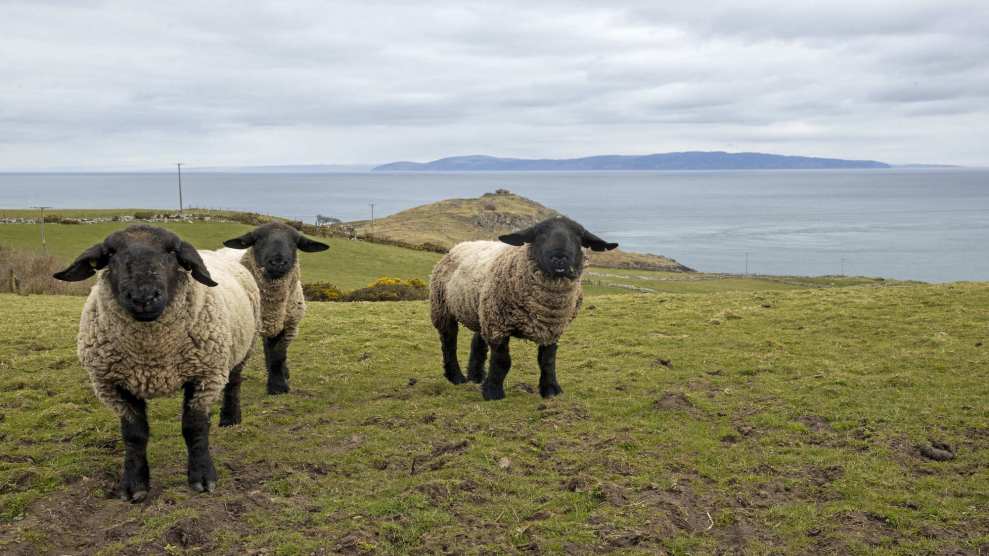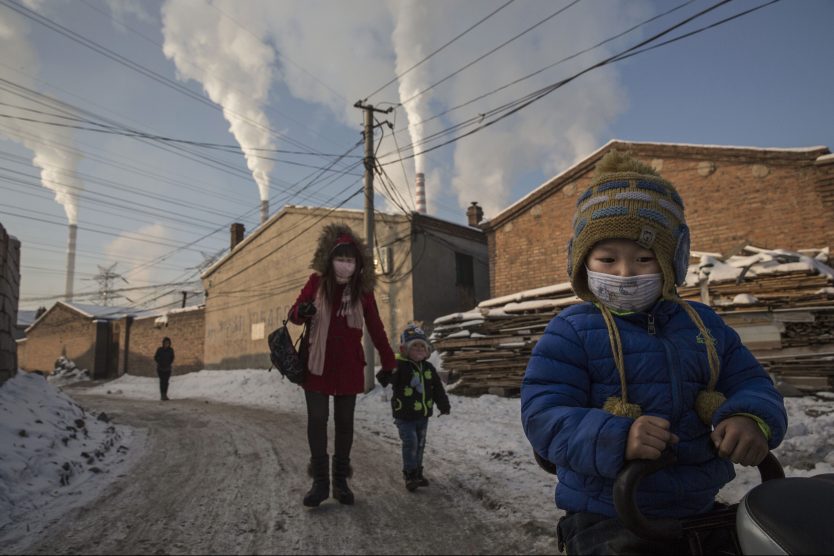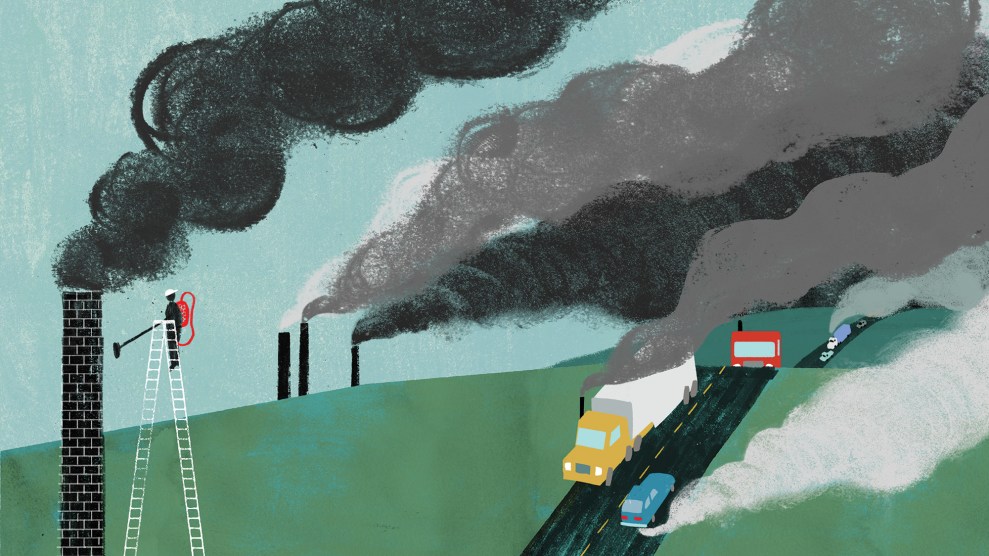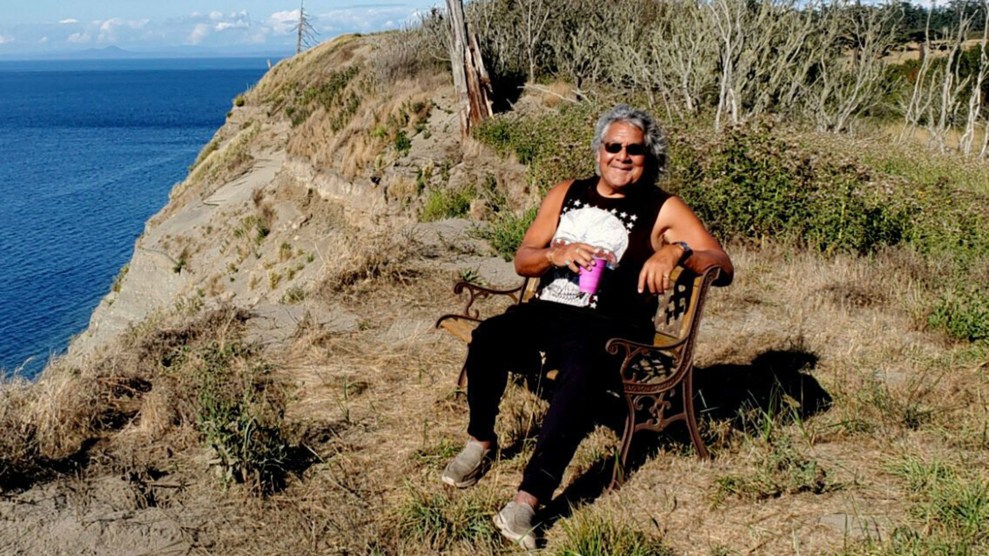
Liam Mcburney/ Zuma
This story was originally published by the Guardian and is reproduced here as part of the Climate Desk collaboration.
Frogs hopping around his sheep field were a sure sign to David Reay that the land wanted to be boggy. It had been grazed for centuries and keeping a particular area dry had been a constant battle. “The frogs were still coming back, as if to say, ‘where’s my pond?’ So what I want to do as part of this is give them back some of their pond,” says Reay, who is creating what he hopes to be a pioneering carbon farm on the Mull of Kintyre, a remote peninsula on the west coast of Scotland.
Reay, a professor of carbon management, bought his farm three years ago. It lies in the village of Glenbarr, on the west side of the peninsula, which is best known for inspiring the Paul McCartney song of the same name. Reay’s dream was to buy some land that could enable him to remove his and his wife’s lifetime’s carbon footprint from the atmosphere.
His outcrop of land is sandwiched between stormy seas and low-hanging clouds. The farm is already embracing its rebellious streak—bouquets of rushes are appearing between scruffy grasses, and gullies are stuffed with bracken, thistles and gorse, despite sheep grazing them last winter. It has more than half a mile of beaches and coves, complete with a family of otters.
Reay is using core samples of the soil to meticulously measure how much carbon can be stuffed into this land, just as scientists do in the Arctic. He is a self-proclaimed “carbon nut”: he hasn’t flown for 17 years, drives an electric car, has solar panels, efficient loft insulation and when the time comes wants to have a green burial instead of being cremated. “It just makes sense in terms of carbon,” he says. “With cremation you’re losing a lot of good stuff into the air that you could be putting into the trees and soil.”
Reay will be turning the sheep farm into a mixed-leaf wooded area with large wet bogs and wildflower-rich grassland. At the moment, there are 100 sheep, and parts of the farm have already been fenced off. Reay will be phasing out the sheep over five to 10 years, and eventually the farm will be livestock-free.
Sequestering carbon in the land is one of humanity’s greatest challenges, and although there has been an increase in “nature-based solutions” and tree-planting programmes, there is still a lot we don’t know. There are a few carbon farms in Australia and although lots of regenerative farmers and rewilders in the UK are probably increasing carbon in the land, Reay doesn’t know of any others whose primary focus is to measure it.
After the oceans, the soil is the largest active store of carbon, but a third of the planet’s land is severely degraded, according to a UN-backed study, a situation driven largely by intensive agriculture. The point is to work out how carbon farming can operate on a very small scale, which might have larger implications. “It’s quite nice to be robust,” says Reay.
Reay’s plans mean the 74-acre farm should suck an average of 99 tons of carbon dioxide out of the atmosphere every year for the next 50 to 100 years. The average person in the UK emits about 6.5 tons of carbon a year, so over a lifetime that’s about 440 tons. The biggest part of the carbon stock on Reay’s farm is in the soil, and the way to measure this is by digging a lot of it up. “It was like a Swiss cheese by the time I finished,” he says.
Reay set up a grid and took nine cores in a number of places, digging 12 inches into the soil with a tube and sucking out the sample, which was then taken to a lab where researchers worked out the percentage of carbon in the soil at specific depths. Once you work out the “bulk density” of the soil—essentially how much soil there is in each cubic centimeter—then you can calculate how many grams of carbon it contains.
In the top four inches of soil in the field we are standing in, there is now about 5 percent carbon; in the woods this is a bit higher, between 15 and 20 percent, because there is more carbon-rich organic matter, such as dead leaves, being incorporated into the soil. The deeper you go into the earth, the less carbon there is.
The last sampling cycle took six months, and Reay will repeat the process every five years. He hopes that eventually carbon levels will increase to about 15 to 20 percent in the top four inches of soil all over the farm. “Only a small change of a few percent of carbon over the whole farm is an awful lot of extra carbon taken out of the atmosphere and kept in the soil,” he says.
As the sheep leave the farm, he will block up the drains that have removed boggy areas and ponds from the land. Already, irises are taking over the wetter patches, creating more diverse, interesting habitats that will also contain more carbon. The soil will remain the biggest carbon stock but most of the increases in the next 50 years will be above ground, because of the trees.
The land in this part of Scotland probably lost most of its trees during the Highland clearances, which began in the 18th century when crofters were forced out to make way for larger, more profitable landholdings. Reay is aiming for 50,000 mixed native trees, some through natural regeneration, some through planting. He has already put in 500 and was meticulous about their location. “They got the deluxe treatment,” he says.
“They’re kind of local league players compared to the Premier League in terms of yield classes, but what they are is, in my view, more sustainable,” he says. Up on the hill near Reay’s house are the rigid blocks of a non-native sitka spruce plantation, a common feature in the Scottish landscape. There will be no sitka on Reay’s farm, because despite its fantastic carbon-sequestration potential, it has few other benefits.
“We need to achieve the Paris goals. But if we do them at the cost of biodiversity, and at the cost of people’s livelihoods—like the sheep farmer that we work with—and we do it at the cost of everything else, like food production, then it’s completely unsustainable, it’s not worth it. I’d rather fail on net zero than take that route. Even as a carbon geek with carbon blinkers on, it has to be sustainable, it has to be resilient,” says Reay.
Reay is probably enthusiastic about a lot of things, but his affection for this bit of land is clear. “It’s one of those things where I almost want to live forever just to see it, because I’ll never get to see it in its maturity,” he says. “A lot of the trees we’re planting won’t be mature until I’ll be the equivalent of 130 or something. So I’m gutted I won’t see it.”
He wants to persuade university students to visit and learn about what he’s doing with the promise of beer and pizza.
Currently, the farm has no house, so Reay camps on one of the beaches with Ginny, his black labrador. He wants to build an eco home in a little dip in the land, hidden from the rest of the world, with a view out over the Atlantic. He is able to visit from his home near Linlithgow, not far from Edinburgh, a few times a month, but in the next few years he hopes to move here permanently. “I love it. Carbon is my thing and being here in Kintyre, it’s the best job in the world.”
When I ask Reay what lessons he’s learned, he immediately says it was “sobering” to discover that it will take 12 years to absorb all his and his wife’s emissions. “In the big scheme of things, this isn’t the answer … I really hoped it would be. I thought maybe someone had missed a great trick for sequestering carbon in soils.
“When you do the numbers there’s no way you can do this for everyone in Scotland or the world. There’s just not enough land. So it’s going to help. But it really brought home to me that actually, nature—nature-based solutions, tree-planting and soils—is definitely part of the solution but there’s no way it can do the whole job.”












